How difficult can it be to identify a couple of local buteos?
Buteos are the broad-winged hawks that hunt in open spaces. There are only two likely to be seen locally at this time of year: Red-tailed Hawk, Rough-legged Hawk. (Well, there may be other accidental visitors, but don’t count on them.) The Red-tailed Hawk is named (not surprisingly) for its red tail. The Rough-legged Hawk for the fact that its legs are feathered down to its toes.
The problem arises because each of these hawks has a range of plumages, i.e., morphs. Further, the Red-tailed Hawk has a sub-species, Harlan’s Hawk, that some think should qualify as an entirely different species. Well, that is my excuse for not being able to sort out some casual observations.
In the numbered pictures, below, I offer guesses, not assurances. Suggestions are welcome.
1) First, an easy one: a Red-tailed Hawk on a fence post.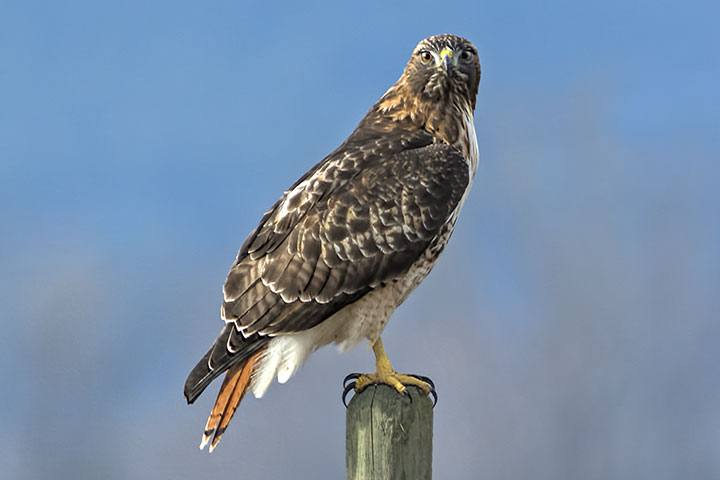
2) Then, a Red-tailed Hawk hunting in a field.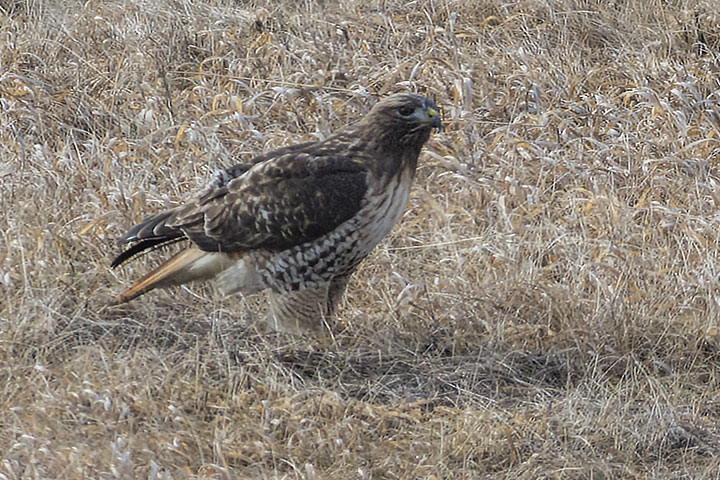
3) Here are two views of the same Rough-legged Hawk.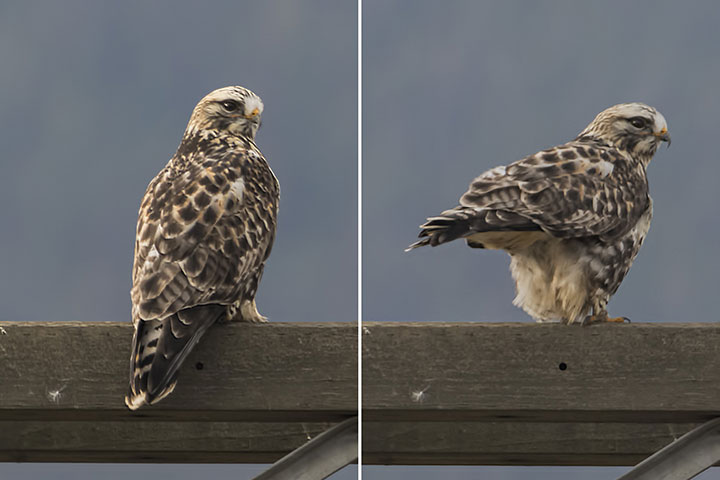
4) And a Rough-legged Hawk in flight.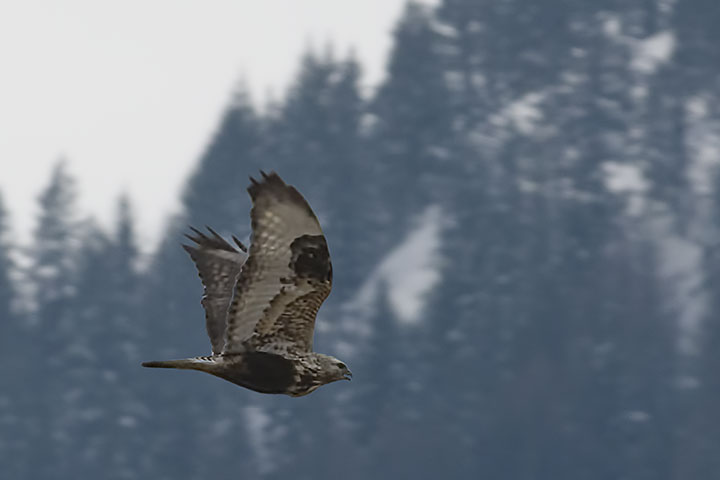
5) This bird is unclear, but it might be a juvenile Red-tailed Hawk. Suggestions?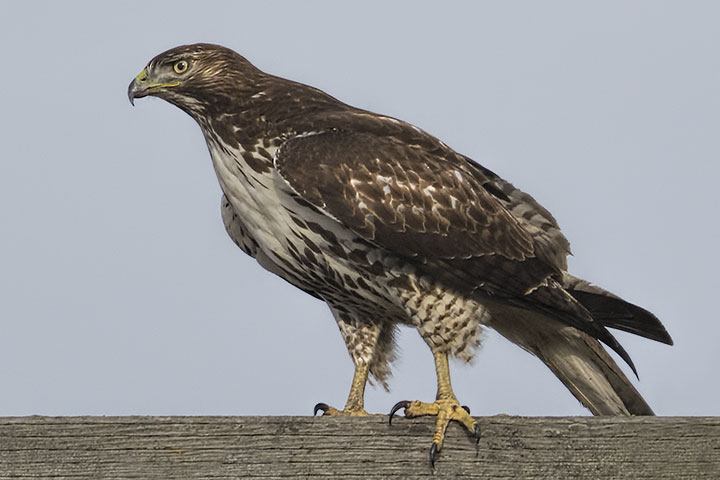
6) Finally, the ultimate problem hawk. I speculate that it is a juvenile light-morph Harlan’s Hawk.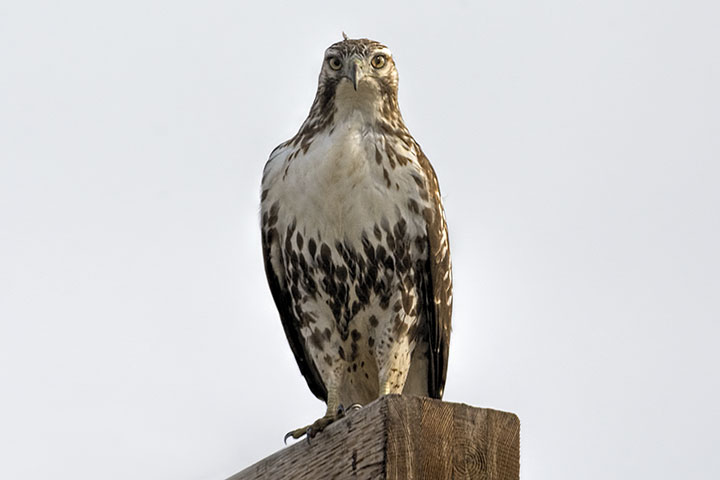

Hi Alistair-nice shots as usual. I will comment on the last two. The pale eye indicates juveniles as you suggested. I think you are right on the Harlan’s. #6-A pale Harlan’s has a white throat, white supercillium and blobbly marks on the chest as your’s does. If one could see the tail and underwings it might further confirm the identity.
#5-Very similar to #6 but dark throat and very faint supercillium so I would go with Red-tail.
Not sure what references you are using but here is where I got my information; http://www.aba.org/birding/v42n2p30.pdf
Len, I used that pdf and an image in Wheeler’s book. Both were of a light morph Harlan’s and looked very close to my bird. As to the other markings, Derek Kite was with me and he managed a picture of the same bird that shows what you seek. It is at,
https://lh4.googleusercontent.com/-NNpNkBpPZs8/UtdcxfZm1EI/AAAAAAAAMuk/EfkpE4o8LZo/w1313-h873-no/20140115_0639.jpg
Ah yes-you can see the tail quite well here and it shows no rufous as far as I can tell. This would further reinforce the Harlan’s theory. Mind you, a juvenile Red-tail doesn’t get its’ red tail until it is an adult but this tail appears to be quite pale.